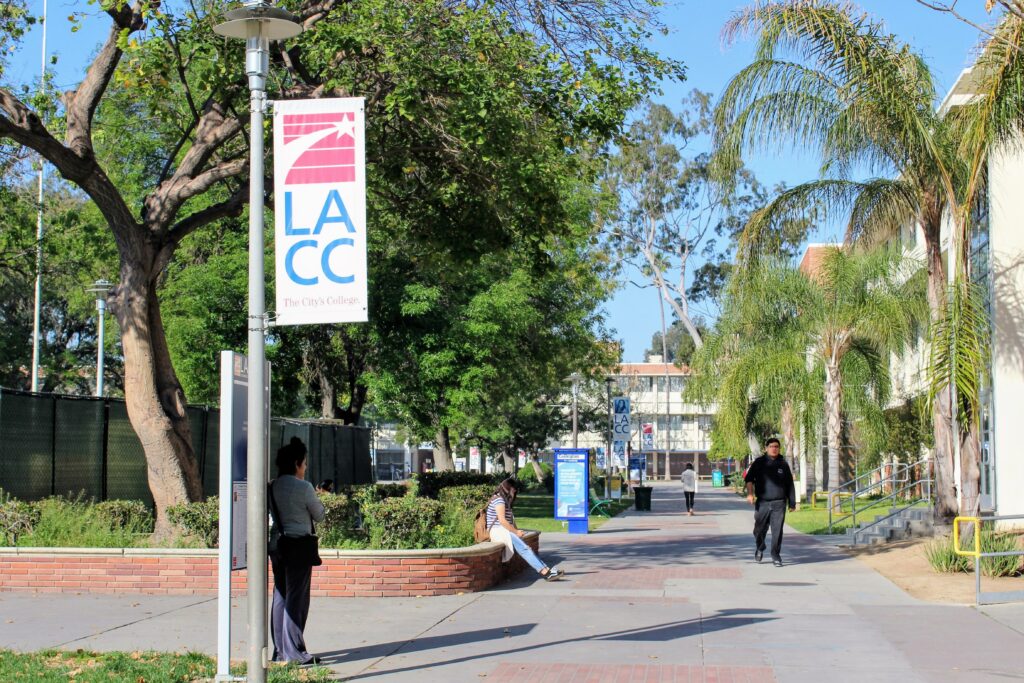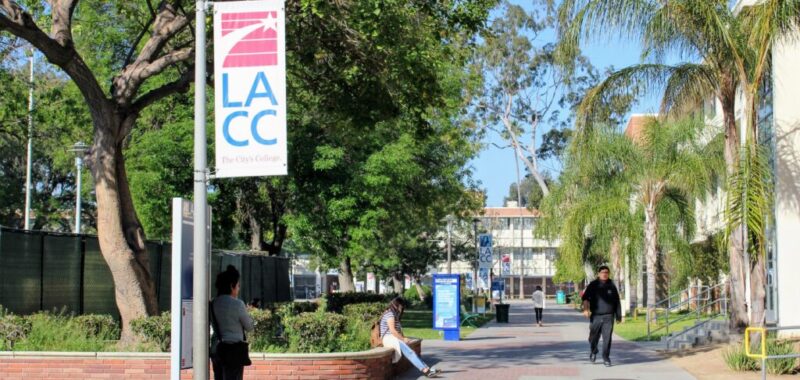
Los Angeles City College
Credit: Larry Gordon / EdSource
Community college bachelor’s degree programs can provide a concrete pathway to socioeconomic mobility, while helping achieve the dream of completing a bachelor’s degree for students who have not been served by any other public college sector, especially among populations who are historically underserved.
Nationwide, 187 community colleges in 24 states are now authorized to offer at least one bachelor’s degree program. It has been nearly a decade since 15 California community colleges first offered a bachelor’s degree program, and there are now at least 38 California community colleges that can do so. A survey of students participating in California’s pilot program found that more than half would not have pursued a bachelor’s degree had it not been offered at their community college.
Given that these programs can improve access to bachelor’s degree programs and jobs, it is frustrating that the programs are not more widely available across the state’s 116 community college campuses, which are closer to home for far more of the state’s students than either a UC or CSU campus.
Unfortunately, community colleges have historically had a complicated standing within the higher education ecosystem, and their bachelor’s degree programs have been held back by stigma, suspicion and scrutiny.
Stigma is palpable in references to community colleges as “junior” or “lower-tier” colleges, despite California authorizing them to provide bachelor’s degrees nearly a decade ago. Suspicion is evident in claims that community colleges are not cooperating with other entities, despite California’s policies that give universities the power to delay and even prevent community colleges from offering bachelor’s degrees. Scrutiny refers to the numbers of hoops that community colleges must jump through, especially with bachelor’s degree program approval.
But California’s community colleges are an important feature of the higher education landscape. Serving nearly 2 million students annually, it is the largest higher education system in the country. Despite evidence of their success in providing a concrete pathway to jobs and socioeconomic mobility, community college bachelor’s degree programs continue to face many roadblocks that do not center students’ and communities’ best interest at heart.
Let’s address common myths about community college bachelor’s degree programs:
Myth 1: These programs duplicate existing academic programs and steal students from colleges.
Reality: By 2030, there is a projected state shortage of 1.1 million bachelor’s degrees. Community college bachelor’s degree programs are one solution to this supply problem. Research shows California’s community college bachelor’s degree programs provide a pathway to bachelor’s degrees for people who likely would not have had it otherwise. They especially benefit older students — 77% of community college bachelor’s degree program students are 25 or older, compared with just 23% at California State University (CSU). There is no concrete evidence, to our knowledge, that shows that community college bachelor’s degree programs are “stealing” students from other public education segments in California. Research in Florida shows no decline in regional public university enrollment when community colleges offered a bachelor’s degree.
Myth 2: Community colleges lack quality and produce poor outcomes.
Reality: There have been lots of positive outcomes relating to California’s community college bachelor’s degree programs. Once students begin upper-division coursework, 67% graduate within two years and 76% within three years. Nationally, the majority of graduates of community college bachelor’s degree programs are Latino students. In California, distance from a CSU or UC campus can stymie a community college student’s ability to transfer to complete their degree. California’s community colleges play a vital role in providing college and bachelor’s degree access. They also undergo rigorous accreditation to maintain high quality. For example, West Los Angeles College’s dental hygiene program purports a 100% licensing examination pass rate among graduates.
Myth 3: It is easy for community college bachelor’s degree programs to get approved.
Reality: Current policies create unique hurdles for community colleges that want to offer bachelor’s degrees. While California’s process of approving community college bachelor’s degree programs is similar to other states in some ways, it is unique in terms of the power that the CSU and University of California (UC) systems have to delay or prevent them from happening at all. For example, when Feather River College attempted to offer a bachelor’s degree in applied fire management, Cal Poly Humboldt — a college 270 miles away — objected to the program, citing duplication despite the fact that the fire program at Humboldt did not even exist yet.
It is easy to get caught up in preconceived myths about community colleges. But the reality is that community colleges are beneficial for students, and, by offering bachelor’s degrees, they can support the economic mobility of more students.
As California faces growing demand for bachelor’s degree holders, these programs offer a practical solution that deserves recognition and support rather than continued stigma, suspicion and scrutiny. Given their success, policymakers should strengthen and support these programs, allowing them to grow alongside other college options in California.
The opinions expressed in this commentary represent those of the authors. EdSource welcomes commentaries representing diverse points of view. If you would like to submit a commentary, please review our guidelines and contact us.
•••
Cecilia Rios-Aguilar is professor of education and department chair at the School of Education and Information Studies at UCLA.
Debra D. Bragg is president of Bragg & Associates and endowed professor emerita of higher education at the University of Illinois at Urbana-Champaign.
Elizabeth Meza is a senior research scientist at the University of Washington and a New America Education Policy Program Fellow for Community Colleges.

